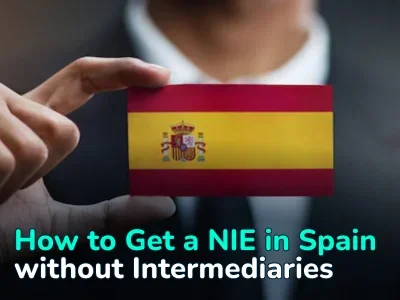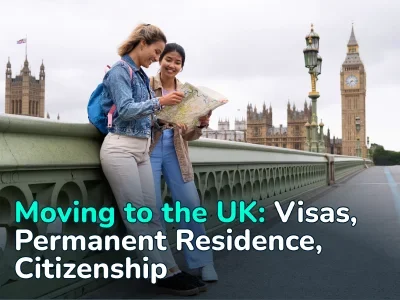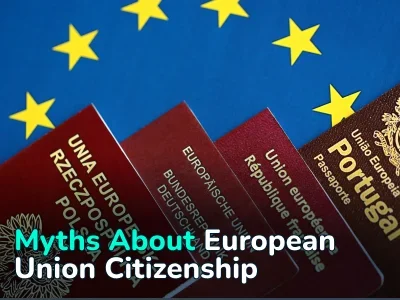
Nine legal ways to immigrate to the USA
There are several ways to permanently reside in the United States thanks to the American immigration system. There, foreigners can quickly adapt and fulfill their potential. This article provides detailed information about all legal ways to immigrate to the New World on immigration and non-immigration visas.
The ways to move to the US
1. «Green Card», winning the Diversity Visa Program Visa Lottery
Every year the United States draws 50,000 Green Cards (DV) in the lottery. Besides, winners’ close relatives (spouses and single children under the age of 21) also get these Green Cards. It is not necessary to have a sponsor in the United States when winning the lottery. The Green Card gives the right to move to the country without additional conditions.
2. Family Immigration to the United States (moving with the sponsorship of a relative)
- Closest family members of a US citizen or a person with the LPR (Lawful Permanent Resident of the USA) status have the right to move to the US:
- wives and husbands;
- children (adults, married and single under 21 years of age), including adopted children;
- parents;
- blood brothers and sisters.
The waiting period for obtaining the visa depends on the closeness of kinship.

Priority order (descending preference categories):
- F1: married children of American citizens and their under the age children.
- F2: husbands/wives, minor children of a legal resident of America, as well as single full-aged children. Spouses and minor children are a priority.
- F3: married adult children of US citizens with spouses and children under 21 years of age.
- F4: married siblings of US citizens with families (wives, husbands, and children under the age) but only if the US citizen requesting their relocation is at least 21 years old.
3. Marriage to a US citizen
Marriage gives the right to move to the United States in a few cases:
- Fiancé(e) Visa (K1). An applicant must travel to the country, marry a US citizen within 90 days, and obtain a conditional permanent residence (up to 2 years). Then, they can get permanent residence status.
- Spouse Visa (C1/ IR1). If the marriage to an American citizen took place outside the United States, one needs to apply for a C1/ IR1 visa post factum.
- Any type of non-immigrant visa. The condition: marriage to a United States citizen on the USA territory with a subsequent change of status. In this case, one can get citizenship after 3 years of continuous residence in the country.
4. Marriage to a US Lawful Permanent Resident (LPR)
Based on the marriage of a foreigner to a lawful permanent resident of the United States, spouses, their single children (first priority F2A), as well as children over the age of 21 (second priority F2B) have the right to immigrate to the country.
Important: this privilege also applies to same-sex spouses of citizens and people with the LPR status, as well as their minor children.
5. Receiving refugee status
Repressed in the country of origin on religious, social, national, political, or racial grounds people can move to the USA after receiving refugee status.
Important: people repressed on criminal grounds do not have the right of this privilege. Asylum status is often obtained when entering the country on non-immigrant visas. Then applicants request asylum, and if the state grants it, they receive a residence permit.
6. Employment in the USA
To get a work visa, one usually needs to first work in the United States on an H-1 work visa for at least 3 calendar years. Both for the work visa and permanent residence, there is a condition: an applicant must be in high demand in the American labor market or at a specific American employer, which, in this case, acts as a requesting immigration sponsor.
The work visa opens the way to immigrate for several groups of people.
- First priority level (E1):
- Outstanding scientists, men of science, education, sports, or business with official confirmation of demand and merit in the professional field at the local or international level.
- International professors and researchers with at least a three-year teaching or research experience.
- Second priority level (E2):
- Talented people with a scientific degree (bachelor’s degree or higher) with at least 5-year proven outstanding professional activity.
- Talented scientists, businesspersons, and artists with a level of competence bordering on genius, which means of much higher than the standard level of proficiency in the subject. In some cases, people of this category do not even need an employer’s application to obtain a work visa. This group accounts for about 30% of the annual quotas for labor immigration.
- Third priority level (E3):
- Highly qualified representatives of professions that require at least 2 years of training (important condition: the work performed by this group of people must be non-seasonal and permanent).
- Representatives of professions that require a degree, starting from an American bachelor’s degree and its foreign equivalents.
- Representatives of professions that are in demand in the American labor market, that need at least 2 years of training. In this case, the skill level does not matter but the nature of the work performed must be permanent and not seasonal.
- Fourth priority level (E4):
- The International Broadcasting Bureau employees or persons received grants from this organization.
- Churchmen and a certain range of workers employed in religious organizations.
- Some employees and former employees of the American government.
- Widows and children of people who worked in international organizations, such as NATO.
7. Transnational Transfer (L1 Visa)
Owners and representatives of international companies, who must be located on the territory of the USA, have an opportunity for business immigration to the United States. This applies only to people who work in companies with branches both in the country of origin and in the US. There must be its branch in one country, and a head office in another one.
The L1 Visa is issued for 1 year. If a representative office of a company located in the United States is successful and its profit covers the owner’s residence in the USA, the visa is extended for 3 years. Sometimes, the L1 Visa can be obtained for 3 years from the very beginning.
8. Investor Visa (E)
Large businesspersons, who can invest at least $500,000 in the United States without violating the law, can immigrate to the USA on E-Visa.
9. A work contract, an internship or study in the USA
People who receive an academic education at universities in the United States can immigrate to the country on the before-mentioned grounds. After four years of study at a university or two years of master’s degree, a foreign graduate can stay in the country for getting additional practical experience and education.
In essence, this privilege gives the right to work and intern in the US for additional 12-17 months after graduation from an educational institution. This period is added to the time when a person can stay in the United States on a student visa.
If during this period a person finds an employer interested in their services, they can apply for the H-1B specialist status. After 1-3 years of this work, one can already apply for permanent residence on bases of working in the USA.
Sum up
It is possible to immigrate to the United States on immigration or non-immigration visas with a future status change. It is more efficient and profitable to enter the US on the first-type visas since they guarantee to obtain the American residence permit. Entry on non-immigration visas does not always result in a status change and may not culminate in obtaining the residence permit. Nevertheless, this way is also popular for moving to the USA.























